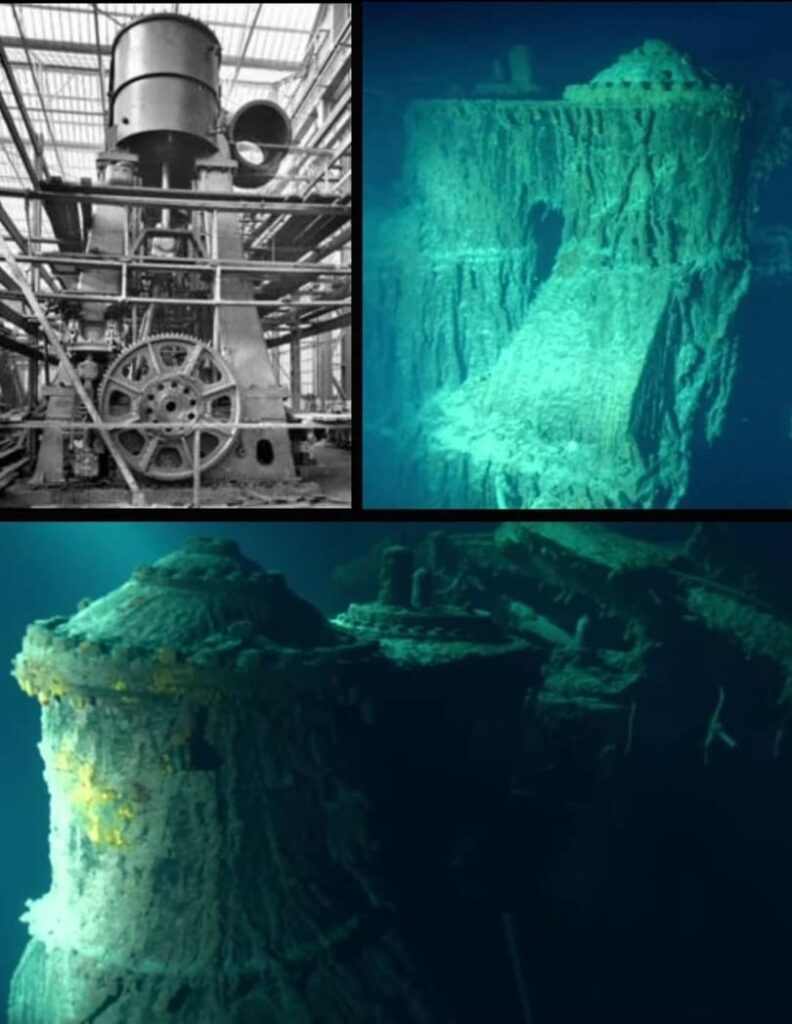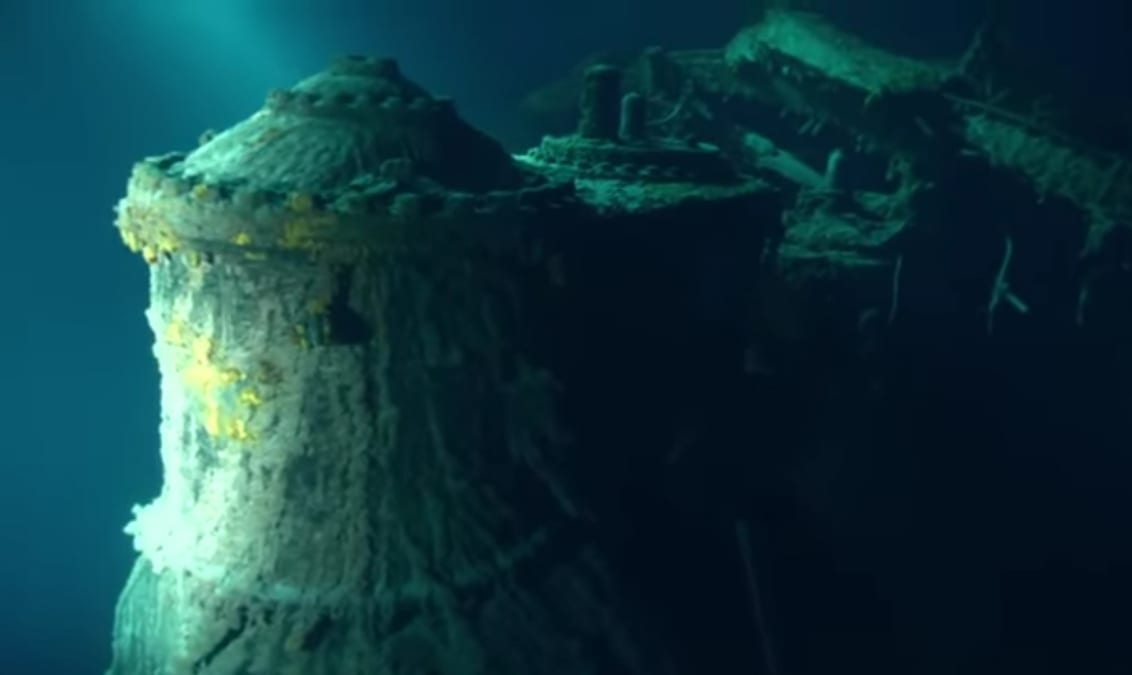The Twin Reciprocating Engines of the Titanic: Rising to a height of four stories and producing around 30,000 horsepower, they Hold Firm Despite the Wreck’s Decline

Amidst the haunting remains of the RMS Titanic, lying at the bottom of the North Atlantic Ocean, the twin reciprocating engines stand as towering testaments to the ship’s once mighty power and grandeur. Each of these colossal engines, nearly four stories tall, remains among the most solid and unchanging remnants of the rapidly deteriorating stern section of the wreck. These engines, in their prime, were marvels of engineering, embodying the pinnacle of early 20th-century industrial achievement.
Constructed with precision and care, the Titanic’s twin reciprocating engines were designed to generate immense power. Each engine contributed significantly to the ship’s overall propulsion system, producing a combined output of nearly 30,000 horsepower. This formidable force, when coupled with the additional 16,000 horsepower generated by the center turbine engine, allowed the Titanic to effortlessly reach speeds exceeding twenty knots. On her maiden voyage, the Titanic would only once reach a speed of 23 knots, a testament to the raw power contained within these massive engines.

The reciprocating engines of the Titanic were of the triple-expansion type, a design that maximized efficiency by using steam in three stages of expansion. This design was not only effective in terms of power generation but also showcased the advanced engineering capabilities of the time. Each engine was a complex assembly of pistons, cylinders, and crankshafts, all working in perfect harmony to convert steam power into mechanical motion. The sheer size and complexity of these engines were a reflection of the Titanic’s ambition to be the largest and most luxurious ship of her era.
Today, as the Titanic rests on the ocean floor, the stern section of the ship has suffered significant deterioration. The harsh underwater environment, with its high pressure, low temperature, and corrosive saltwater, has taken its toll on the wreck. Despite this, the twin reciprocating engines remain remarkably intact, standing tall amidst the debris. Their endurance is a poignant reminder of the industrial might that powered the Titanic and the engineering excellence that went into her creation.

The engines’ survival amidst the wreckage also provides valuable insights for historians and engineers studying the Titanic. They offer a tangible link to the past, allowing researchers to examine the materials, construction techniques, and design principles used over a century ago. The preservation of these engines aids in understanding not only the Titanic’s technological advancements but also the broader context of maritime engineering during the early 20th century.
Furthermore, the engines symbolize the human spirit of innovation and the relentless pursuit of progress. The Titanic, with her state-of-the-art engines, represented a leap forward in marine engineering. The ship’s ability to generate and harness such tremendous power was a marvel of its time, and the engines were at the heart of this achievement. Even in their current state, they inspire awe and respect for the ingenuity and craftsmanship of those who built them.

The story of the Titanic is one of both triumph and tragedy. The ship’s engines, designed to propel her safely across the Atlantic, ultimately witnessed her untimely demise. Yet, in their current state, they serve as silent sentinels, bearing witness to the ship’s legacy. They remind us of the Titanic’s brief but impactful journey and the lives that were forever changed by her sinking.
In conclusion, the twin reciprocating engines of the Titanic remain among the most enduring and unchanging remnants of the ship’s wreck. Towering nearly four stories tall, these engines once generated a combined output of nearly 30,000 horsepower, propelling the Titanic to remarkable speeds. Today, they stand as symbols of early 20th-century engineering excellence, providing invaluable insights into the ship’s construction and the era’s technological advancements. Despite the passage of time and the deterioration of the wreck, the engines continue to captivate and inspire, serving as a testament to the human spirit of innovation and the enduring legacy of the Titanic.











